Chinchilla cages: types, features of choice and arrangement

Chinchilla is considered one of the cutest and funniest pets that can often be found in many houses and apartments. To make this miracle feel comfortable at home, and also be provided with proper care, before purchasing it, you should choose the right cage and place for its installation. If you have the skills of craftsmanship, then you can make a house for your pet yourself.
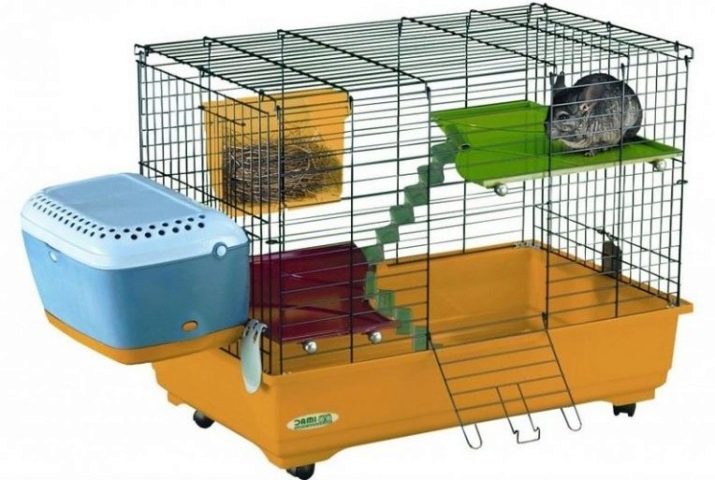
Peculiarities
It is recommended to keep the chinchilla in a specially designed cage or showcase. If the size of the room allows, then for such animals they acquire spacious aviary. The main feature of chinchilla cages is that they must be loose and equipped with all the necessary accessories.
In addition, when decorating a house for an animal, it is important to create a mountainous relief.
Since this pet spends a lot of time for entertainment (it jumps a lot, frolics and runs), it should be additionally equip the cage with running wheels, different ladders, tunnels and hammocks.
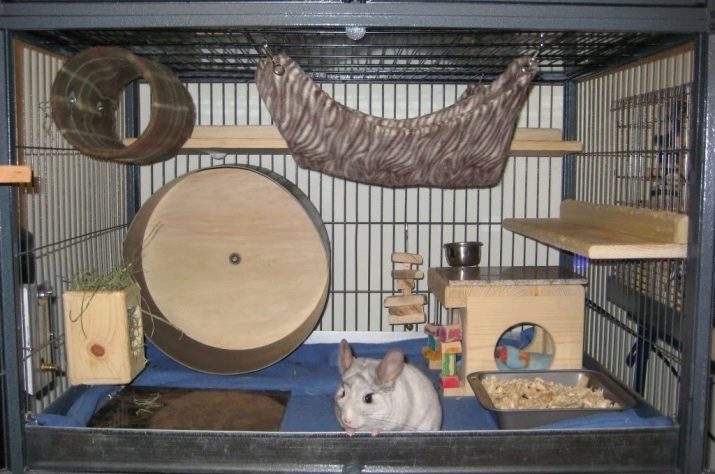
Requirements
Regardless of whether the cage is purchased for a chinchilla ready-made or made independently, it must meet certain standards. This will provide the pet with proper living conditions in the future. The dwelling should not only be comfortably decorated, dry, bright, well-lit, but also have good ventilation.
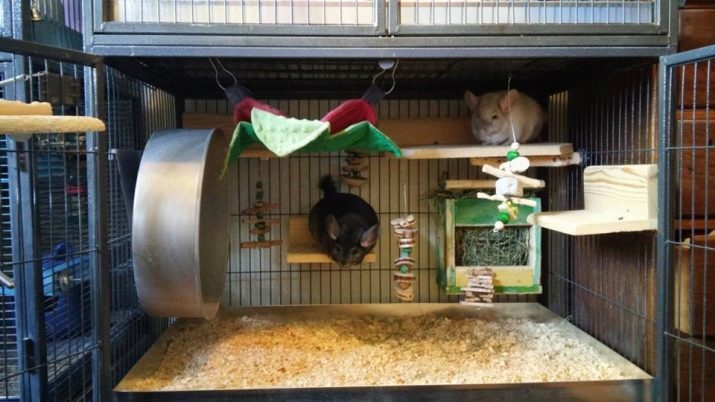
In addition, several characteristics are important for the design.
Minimum size
To keep an adult chinchilla requires a lot of space: the dimensions of the cage should not be less than 50 cm in length and width and 70 cm in height. If the cage is small, then the animal's activity will decrease, it will start to hurt more often.
To keep several individuals, the above parameters must be multiplied by the number of animals.
This size will be enough for the pet to have a place to rest, eat and play.
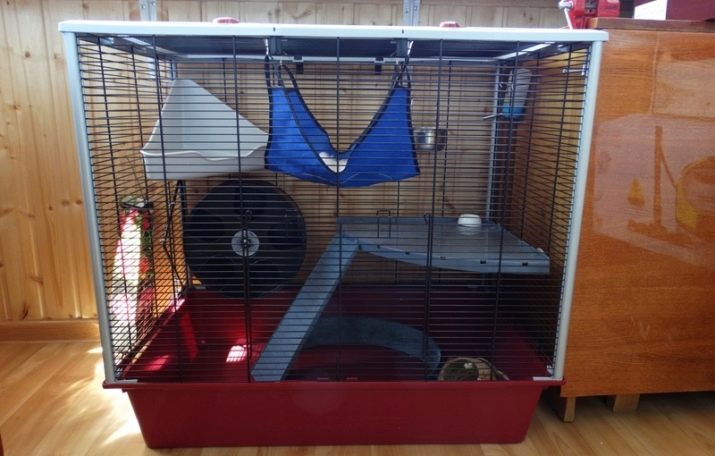
Distance between wire mesh
To protect the animal, this indicator must be no more than 20 mm. Otherwise, the "pussies" can easily get out.
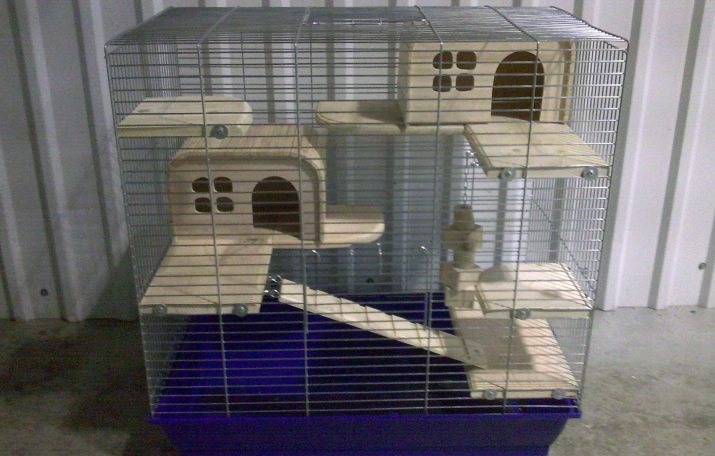
Free access for cleaning
To facilitate the process of cleaning the house will help the presence of a pull-out tray in the structure, where it will be possible to pour small shavings or sawdust... If you buy a cage with a fixed floor, then washing it will be difficult and inconvenient.

Views
Today cages for chinchillas are presented in a huge assortment, and each type differs not only in size, design, but also in price. Several cage structures are best suited for keeping this type of animals.
Showcase
It is made in large sizes and is intended for group breeding of pets. As a rule, such models are purchased by those who plan to professionally breed chinchillas. The showcase is made of various materials, but the wooden structure is in special demand.
A cage made of wood is considered ecological, it looks attractive, but it must be additionally sheathed with dense material, otherwise the pets will quickly gnaw through the walls of the structure. You can also make display cases from durable plywood and glass.
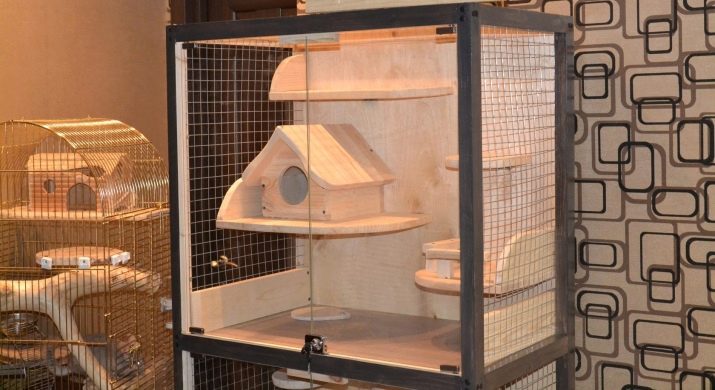
Box of rods
This is a common type of cage that can be found in every zoological store at an affordable price. Additionally, the boxes are equipped with houses, which allows you to save money on the arrangement of housing for the animal. Such cells can be disassembled into separate parts, they are conveniently stored, transported in bags. In addition, the boxes are easy to clean. The only drawback of such models is rods are not able to absorb sound.
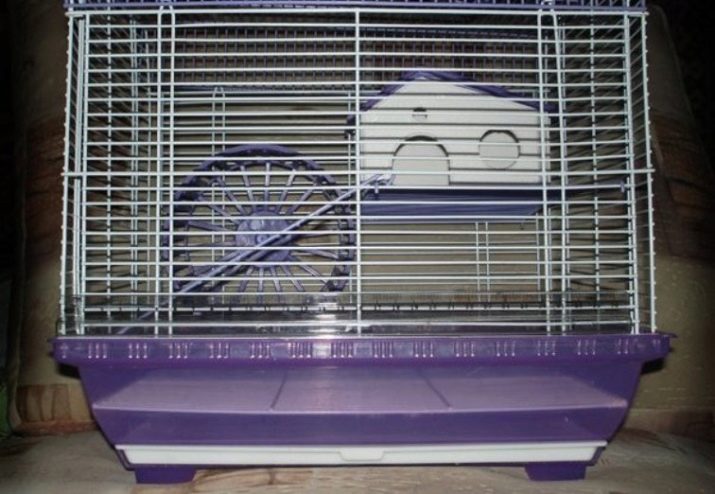
DIY construction
It can be multi-tiered, three-story, corner and wall-mounted. For more convenient operation, the owners make constructions on wheels using old lockers and dressers. The main advantage of such a house is that it can be assembled from any available material according to an individual design.
Most often, homemade structures are made from plywood, slats and glass, but their assembly requires a certain amount of experience and time.
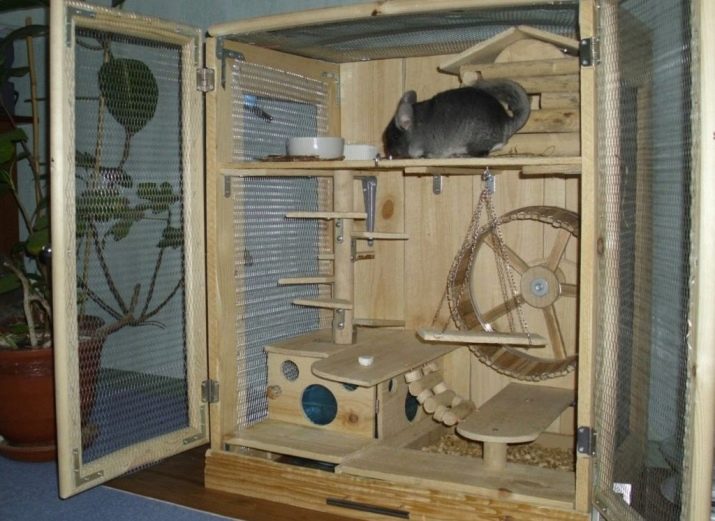
Selection rules
Since a chinchilla spends its entire life in a cage, it is a permanent home and entertainment area for it. In order for a fluffy animal to feel as comfortable as possible in such limited living conditions, its housing must be hygienically clean, spacious and comfortable. Therefore, before choosing a crate for your pet, should take into account not only personal wishes, but also the general characteristics of the structure.

It is worth considering the main criteria for choosing a cage.
- Construction dimensions... It is best to purchase large houses with a size of 90x50x40 cm. There is enough space for a chinchilla so that it can run freely, play and arrange a place to relax.
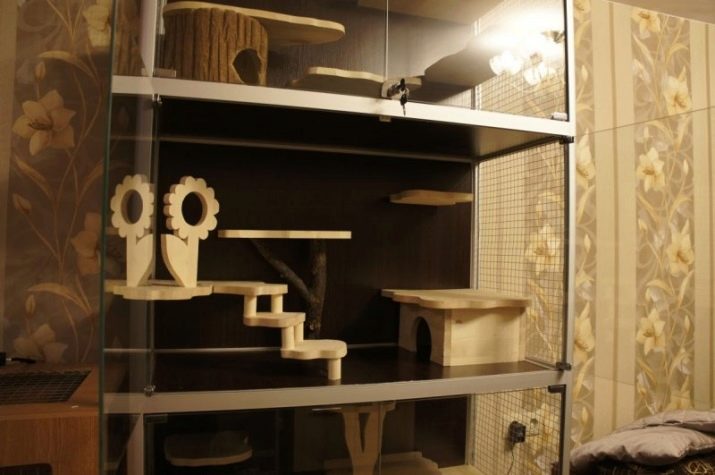
- The presence of a pull-out pallet... This will simplify cleaning and shorten the cleaning time.

- The material for making the cage. It is advisable to give preference to metal and wood products. A combined design would also be a good choice, its frame is made of boards, and the sides are sheathed with metal gratings.
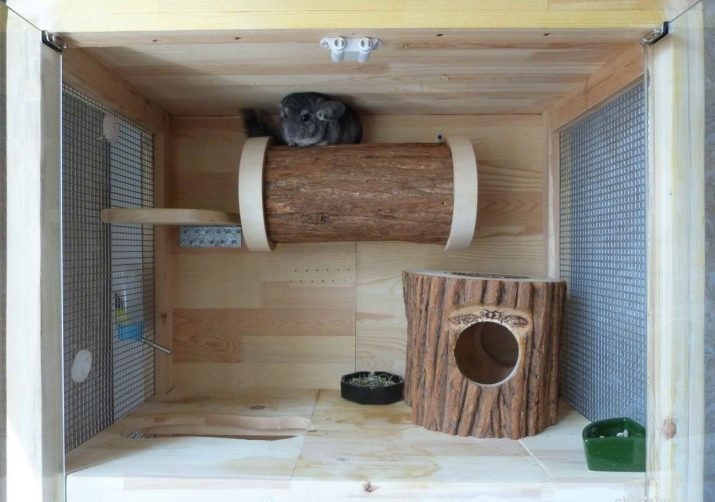
- Operational safety. To prevent the animal from getting hurt, the distance between the iron bars of the structure should be minimal.
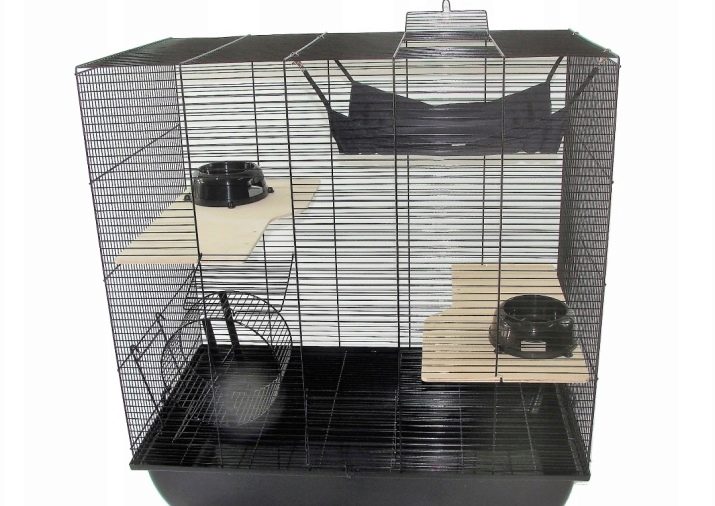
In addition to all of the above, when buying a structure, you should pay attention and for air circulation.
It is recommended to purchase models with drop-down windows for ventilation.
In the absence of good ventilation, the animal's fur can begin to deteriorate and it becomes sick.

How to equip it?
When the question of choosing and buying a cage is resolved, it remains only to equip it correctly. For a rodent you need arrange separate areas for eating, sleeping and leading an active lifestyle.
Since this "fluffy" is very fond of jumping and running, experts recommend installing special shelves in the cells, placed in a checkerboard pattern parallel to each other.
Such shelves of various shapes and sizes can be independently made from any wood.
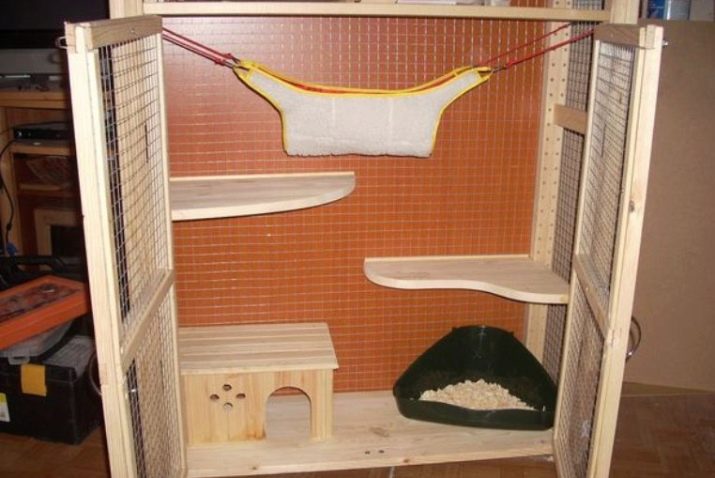
In addition, in the arrangement of the structure, the presence of drinkers and feeders. A drip drinker is ideal for chinchillas, this is due to the fact that the "mohnatik" likes not only to drink a lot, but also to swim. But he cannot get his fur coat, muzzle and paws wet.
As a drinker, it is recommended to use small flasks with a ball and a metal tube at the end. In this case, the cone should be made exclusively of durable glass, plastic is not allowed, since the pet will quickly gnaw it.

As for the feeder, it must have good stability, otherwise the animal will easily turn it over during its mischievous games. The feeder is allowed to be purchased from both metal and ceramics with durable fastening. The structure should be quite sturdy and heavy. It is best not to buy plastic models, as they will not last long.

In addition to the main feeder, a special hay compartment is also installed in the cage. So that the chinchilla always feels great and does not get sick, hay must be included in her diet. Avoiding hay debris can help installation of a separate feeding house... It is found on sale in the form of a ball of wire, but this option has its drawbacks - the animal will stick its head through the bars and can get hurt. Therefore, it is good for sennitsa running ring, it is previously closed and securely fixed.

A house is considered an obligatory component of a chinchilla's cage. It is a wooden structure, the parts of which are fastened with glue or nails. In the house, the pet will spend the daytime sleeping off. At night, the rodent will leave it and start active games.
The house can be made not only from wood, but also from plywood, but in this case it will have to be changed often, since the "fluffy" will quickly gnaw holes. If you plan to keep several individuals, then you need to install one house for each of them separately.
In order for the resting place to fit beautifully into the overall design of the cage, it is recommended to decorate it with tree branches. A filler made of wood shavings should be placed inside the house, it will allow you to keep warm.
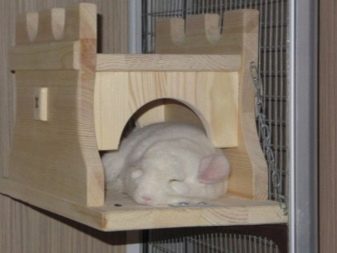

We must not forget about such an accessory as a hammock. It often replaces chinchillas with their main resting place, animals like to sleep in a kind of "crib". Hammocks are easily sewn with your own hands from fabric folded in two layers, which is usually used as jeans and fleece. 4 holes are made at the corners of the fabric, metal chains are installed in them, which are fixed to the walls of the cage.
It is worth noting that this type of animal most often prefers not houses, but hammocks.

Since in the wild, the animal washes its fur coat not with water, but with volcanic dust, then when it is kept at home it must be provided special bath, into which crushed zeolite, sand, talc, medical sulfur, wood ash are poured.
The bath should be bought in a rounded shape with a hole, in which the animal will arrange its bathing. It is quite interesting to watch this process: the pet first lays down on the sand, then starts spinning in it with incredible speed, creating unusual movements and thus cleaning its fur. It is strictly forbidden to replace special sand with ordinary river sand; when bathing in it, a valuable beauty coat will lose its natural shine and beauty.
The container should not be placed in the cage all the time, it should be placed only for half an hour, then removed, otherwise the little rascal will make a mess in it or, at worst, make a toilet out of it.
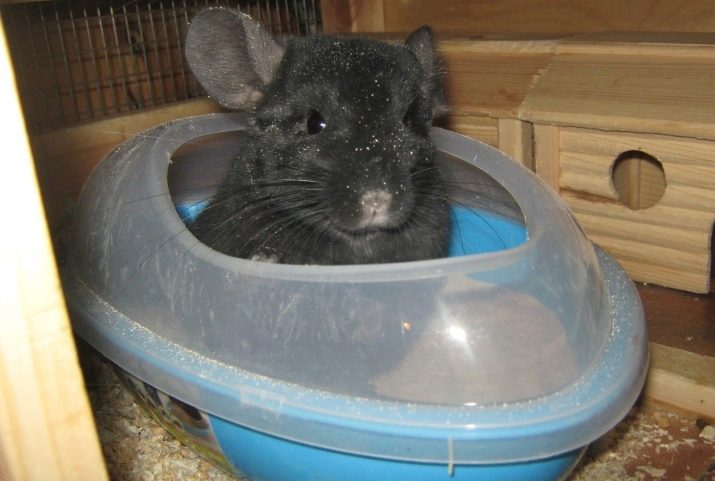
For the pet, you will also have to buy toys and sharpeners for teeth in the form of pumice and special stone. Not simple stones are well suited, but sharpening with admixtures of minerals and vitamins. They allow the animal not only to sharpen its teeth, but also help to maintain its immunity.
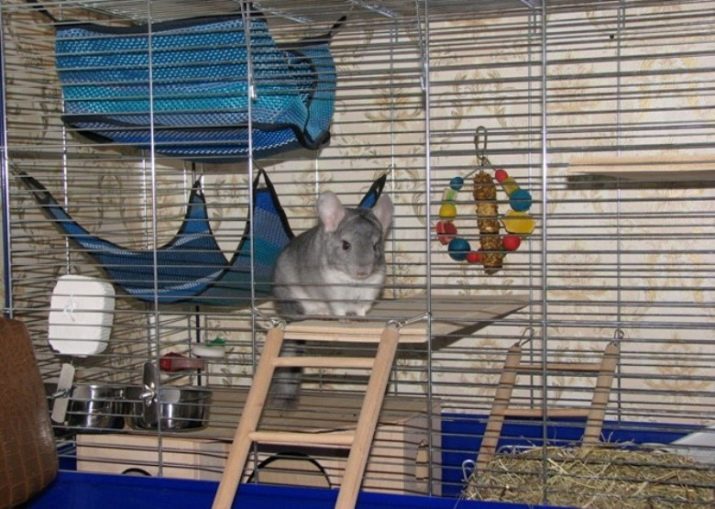
So that the "fluffy" does not get bored and leads a healthy lifestyle, they install running wheel... It can be made of any material, but it is worth remembering that the animal starts playing at night, so metal elements are not recommended. Over time, they will emit an unpleasant creak that will bother the owners of the house.
The wheel should be installed only when it is planned to contain one individual. In the presence of two or more rodents, a "war" will begin for him.
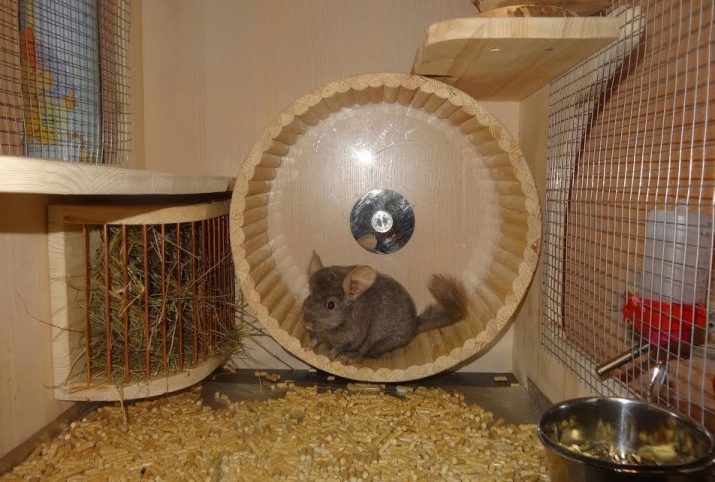
For small cells buy additionally walking balls, with the help of which the pet will be able to move freely around the room. In addition, rodents love various fun, so their house must be decorated with ladders, tunnels, swings and hanging bridges.
They should be made exclusively of natural solid wood and not have any stained areas.
The transitions between the zones in the cage are often decorated with branches made of edible wood, they are regularly replaced with new ones.
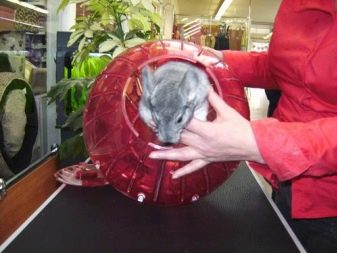
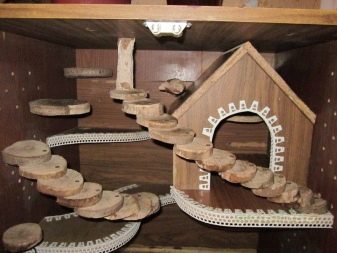
Arrangement of a place for a toilet also plays a huge role. Chinchillas are clean animals and quickly get used to the toilet. For this, a separate place is allocated in the cage, it is covered with corn filler, special granules or sawdust.
It is advisable to purchase the filler without additives and flavors, since rodents will eat it. A good solution is to install a ready-made toilet with or without a folding grate, any glass container is also suitable.
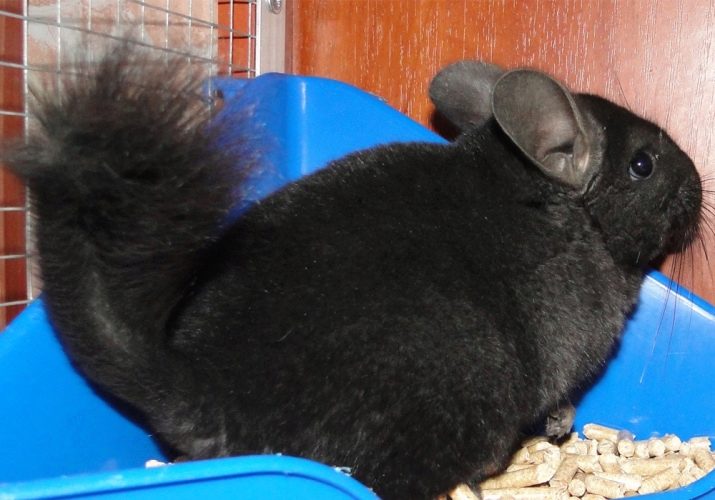
If the cages are large, they can be equipped with all of the above accessories, since there is enough space for this. As for small structures, they are equipped only with the most necessary, and plastic pallets are installed retractable.
In addition, to improve ventilation in the cage, a mesh should be placed on both sides of the structure. It should be made of steel wire, have rectangular or straight meshes, and an anti-corrosion coating.
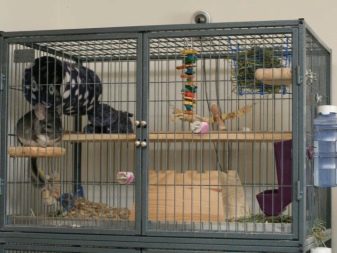
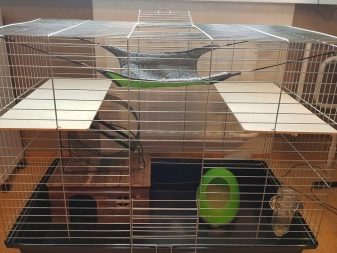
The peculiarities of making a showcase cage for a chinchilla with your own hands can be found in the following video.








